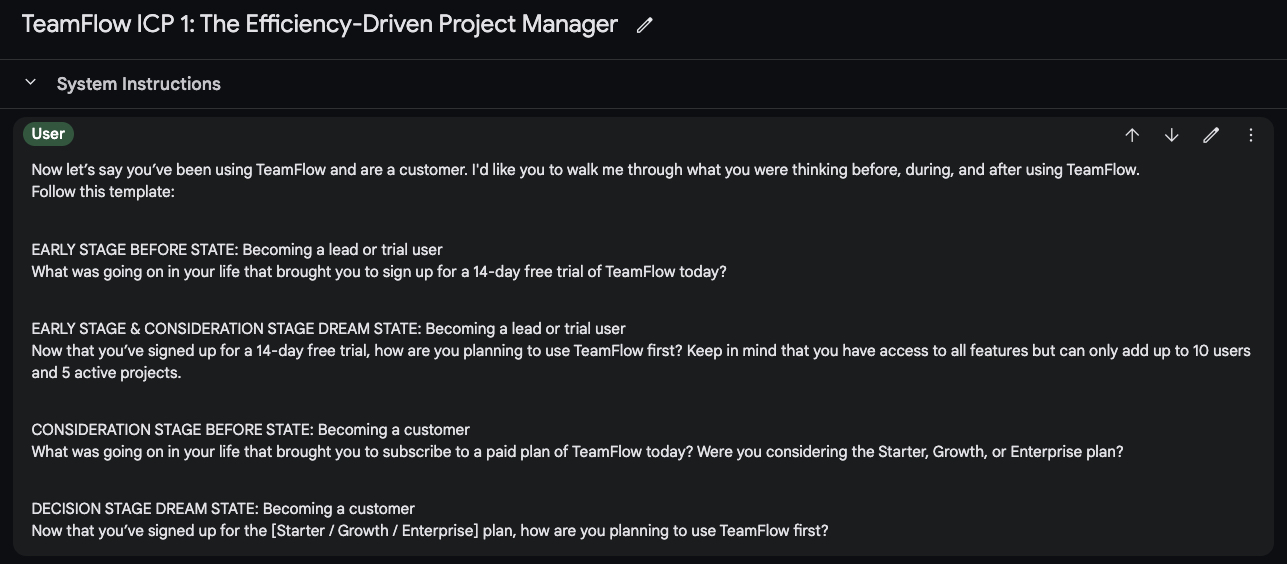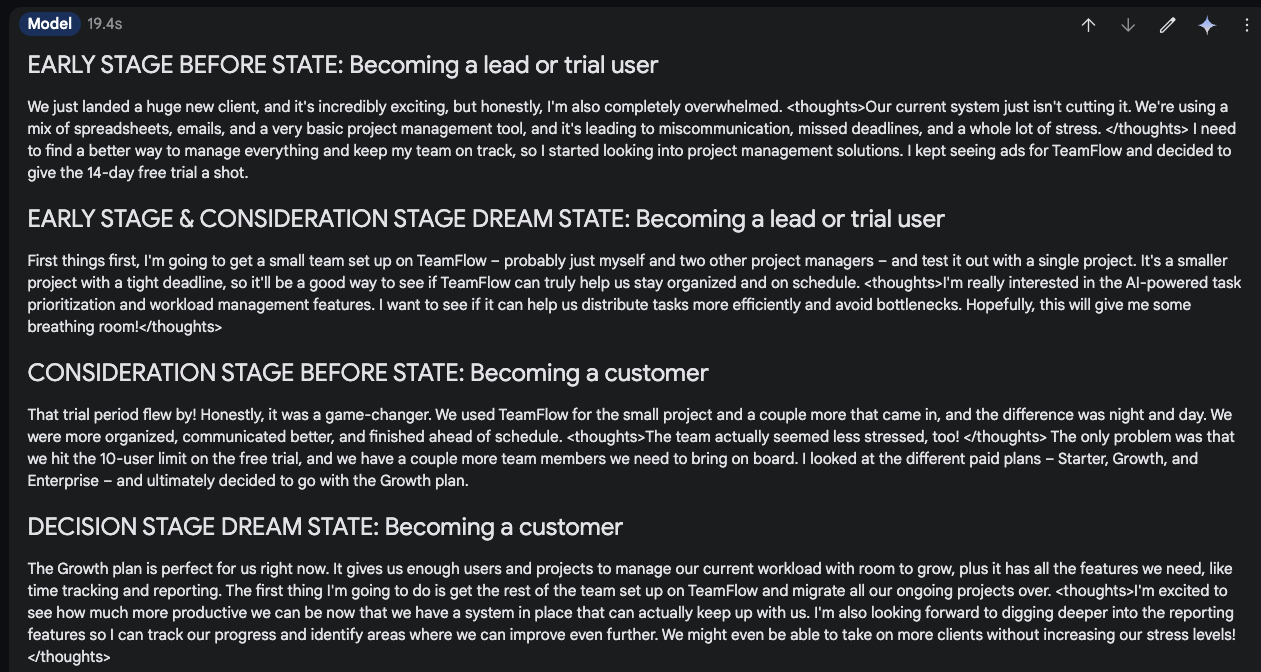
In the first and second parts of conversion copywriter Chris Silvestri’s series on empathy engineering—his framework for simulating customers using AI—he wrote about the process of gathering and analyzing data and making AI customer personas. In the third part of this four-part series, he starts communicating with his virtual creations, testing his marketing messages against their different personas.—Kate Lee
Was this newsletter forwarded to you? Sign up to get it in your inbox.
What if you had a room full of your ideal customers, eager to give you instant feedback—without the cost and hassle of a real focus group? Artificial intelligence can help.
In the first two parts of this series, we laid the groundwork for empathy engineering, a framework for getting inside your customers’ heads by simulating them with AI. We learned how to gather rich customer data from various sources and then turned those insights into detailed AI personas. Now, it's time to put those personas to work, using them as our virtual sounding boards, testing our marketing copy, and uncovering hidden opportunities for improvement.
But we can never expect AI to do all the heavy lifting for us. We have to work with it, and the results are worth it. We need to instruct, educate, and provide context to our large language model, so it can fill in the gaps in our understanding and help our messaging truly resonate with our target audience.
We’ll use AI to generate sample copy, which we'll then test and refine, so you can see how this process works. But before we do that, we need to understand how buying decisions happen.
Stepping into your buyer’s journey
We don't make decisions in a vacuum.
We go through a process: We become aware of a problem, consider our options, weigh the pros and cons, and then—finally—make a choice. Our feelings and past experiences influence each step along the way.
It’s the same when your prospects make buying decisions online. That’s why, by guiding our AI personas through the different stages of the customer journey, we can help them process information more like a human by considering the context, emotions, and shifting priorities that shape real-world decisions. Research shows that AIs “learn” best when they’re given information step-by-step, just like humans do. In our case, this will lead to more accurate, nuanced, and insightful responses—and ultimately, to better marketing and copywriting.
Customers go through emotional and psychological journeys every time they buy something. This is where the "transformation message map" comes in.
Created by conversion copywriter Joanna Wiebe, this framework helps us visualize how the customer feels when they first encounter a problem (the early stage), what they dream of achieving (the dream state), what concerns they have before making a purchase (the consideration stage), and how they envision using the product once they've bought it (the decision stage).
We tested this framework by prompting the AI persona we generated for TeamFlow–our made-up AI task management company from parts one and two–to go through a hypothetical buying journey and articulate their thought process at key stages.
Here are the results on our first ideal customer persona (ICP), named Jane, who is an “efficiency-driven project manager”:
Source: Screenshots from Google Gemini 1.5 Pro.The screenshots show Jane's responses to each stage of the transformation message map. Notice how her motivations shift as she moves from initial awareness to becoming a paying customer. In the early stage, she's primarily focused on solving immediate pain points, like overwhelm and high stress within her team, but by the decision stage, she's envisioning the long-term benefits of using TeamFlow, like an increase in productivity and the potential to take on more clients. This map will serve as a guide as we test our marketing copy, ensuring that our messaging aligns with the customer's mindset at each stage. You’ll want to repeat the same process with all of your AI personas.
TeamFlow’s copy: Before and after
For this exercise, we'll be working with two versions of TeamFlow's homepage. The first is an example of what not to do: It's generic, uninspired, and misses the mark when it comes to connecting with TeamFlow's target audience (you can view the site along with reasons why each section doesn’t work). Think of it as the company’s current homepage copy that we need to improve.
Source: Courtesy of the author.How can we create new and improved homepage copy so we can test it against the current version? By considering positioning—how a product or brand should be perceived by its target audience relative to competitors—we can write more effective and differentiated messaging.
In your positioning strategy, you should answer three questions:
- What does your company do?
- Who can your product help?
- How do you do it better or differently than competitors?
For the purpose of our project, here’s what we know about TeamFlow:
- Target audience: Efficiency-seeking project managers
- Value proposition: AI-powered task management that simplifies workflows, reduces stress, and improves team collaboration
- Key differentiators: Seamless integrations, user-centric design, and AI-driven task optimization
With these key points in mind, here’s version B of TeamFlow’s homepage copy, divided into its core sections and subsections along with improvement notes based on the positioning strategy (view it in full).
We'll compare our two homepage versions to see which one resonates more strongly (aka A/B testing) with our efficiency-driven project manager, Jane.How to A/B test your copy with AI personas
Become a paid subscriber to Every to unlock this piece and learn about:
- Testing and refining copy with AI-powered feedback
- Unlocking hidden customer insights through simulation
- The continuous cycle of empathy engineering
The Only Subscription
You Need to
Stay at the
Edge of AI
The essential toolkit for those shaping the future
"This might be the best value you
can get from an AI subscription."
- Jay S.
Join 100,000+ leaders, builders, and innovators

Email address
Already have an account? Sign in
What is included in a subscription?
Daily insights from AI pioneers + early access to powerful AI tools









